Some 1,000 miles offshore in the middle of the Atlantic, the Azores are the definition of a remote, exotic destination. Boasting some of the tallest mountains on the planet, it’s a real heaven for any adventurer. But fishing in the Azores is what we think really makes it special. Heck, we’re sure the ancient Greeks were referring to this archipelago when they mentioned the “Land of the Blessed” in the Atlantic, because of its abundance of fish!

Deep sea fishing attracts anglers from across the world to the nine main islands here but the reefs and inshore waters are also full of dazzling creatures. And that’s without mentioning the freshwater honey holes, too! But that’s enough superlatives for now.
In this guide, we’ll get down to detail. We’ll take you through the most prized species you can find here, how to land them, where to go, and much more. So without further ado, let’s dive in.
Azores Fish Species
With a diverse range of fishing spots comes a diverse range of fish. Almost any fish you can imagine call the waters around these stunning islands home. From Trout to Trevally, Grouper to Amberjack, Billfish, and more, let’s meet the A-listers.
Azores Freshwater Species
Why focus on freshwater fishing when you’re out in the middle of the Atlantic? Well, while most anglers head here for saltwater action, there’s plenty going on inland. We’ve mentioned the impressive mountains that jet out of the water, and they bring with them some of the most stunning freshwater fishing grounds in the world.

And the fish aren’t bad either. Pristine mountain creeks are home to Rainbow Trout, while ponds and lakes also offer up some impressive-sized Carp, strong Pike, and tough-fighting Perch. These fish are favorites worldwide, so tackling them in such an almighty setting is one for the bucket list.
Azores Nearshore Species
While peak season (i.e. summer) is reserved for the pelagics offshore, nearshore and inshore fishing is possible year-round. Therefore, if you’re coming to escape the winter blues, you’ll be hitting the shallow inshore waters, along with the deceptively calm reefs. Why deceptive? Well, because underneath the water there’s a whole world of colorful, delicious, and exciting fish just waiting to be caught.

We’re talking world-famous names like Trevally (the white variety), Groupers (Blacktail and Dusky), Conger Eels, Jacks, Triggerfish, Parrotfish, Dentex, and Seabream. See, we told you there was color and taste in equal measure! What better way to wrap up a memorable experience on the turquoise waters than with a hearty BBQ on the beach? An Azores nearshore trip promises it all!
Azores Big Game Species
We’ve saved the best ’til last. This is the reason why so many anglers flock to this archipelago every year. This is why the Azores should be on everyone’s to-visit list. Big game fishing.

So far out from any other land, you can expect oversized creatures galore when big game season hits. Come spring, Tuna show up in huge numbers, with four varieties likely to take your bait. Albacore, Bigeye, Yellowtail, and monster Bluefins are all in the cards – although you should know Bluefins don’t show up every year. Whatever you target, though, you’re sure to experience a battle to remember, with some finger-lickin’ meat to go with it.
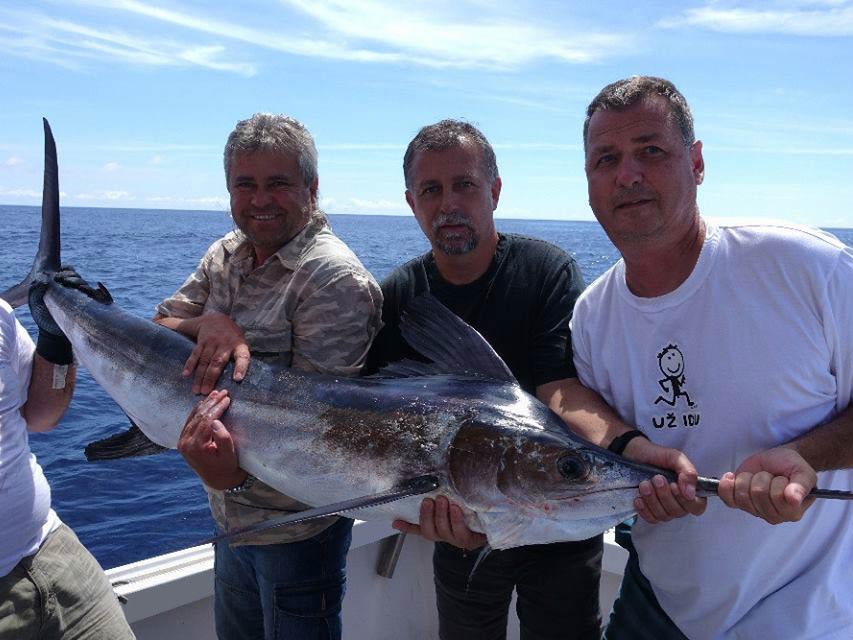
And that’s just the warm-up! Come June, it’s Billfish season, and this is the highlight for locals and visiting anglers alike. Blue and White Marlin are the most sought-after among this tough-fighting family. Blues average around 500 pounds (225 kilograms), with some over double that size regularly being caught!
As if that wasn’t enough, these stars of the show are backed up by a worthy supporting cast. There are more Billfish in the way of Spearfish and Swordfish, while Mahi Mahi and a whole range of Sharks are also possible. We’re sure your heart is already racing just thinking about these opponents. Just beware, big game fishing in the Azores is not for the faint of heart, so we suggest only giving it a try if you have some experience with a rod and reel.
How to Go Fishing in the Azores
The first thing you’ll probably be asking when wondering how to go fishing in the Azores is how to get there. Out in the middle of the ocean, you’d be forgiven for thinking it’s difficult to get to. But thankfully, there are plenty of affordable flights from Portugal’s capital, Lisbon, that make a trip from Europe pretty straightforward. There are direct flights to Ponta Delgada and Terceira Island, with flights lasting around 2.5 hours.
Now, though, we’ll get down to the nitty-gritty of actually casting a line in the Azores. In this section, we’ll outline some of the most popular ways to land fish here. We’ll cover which species they’re most effective for, and exactly what each one means.
Fly Fishing in the Azores
If you’re thinking of exploring those mountain streams, you’d better bring your fly gear with you. Any angler with experience targeting Rainbow Trout knows that landing them on the fly is what it’s all about. Other freshwater species may prove to be a little tricky, but we can assure you that testing your skills in these surroundings – against these fish – is a once-in-a-lifetime opportunity.
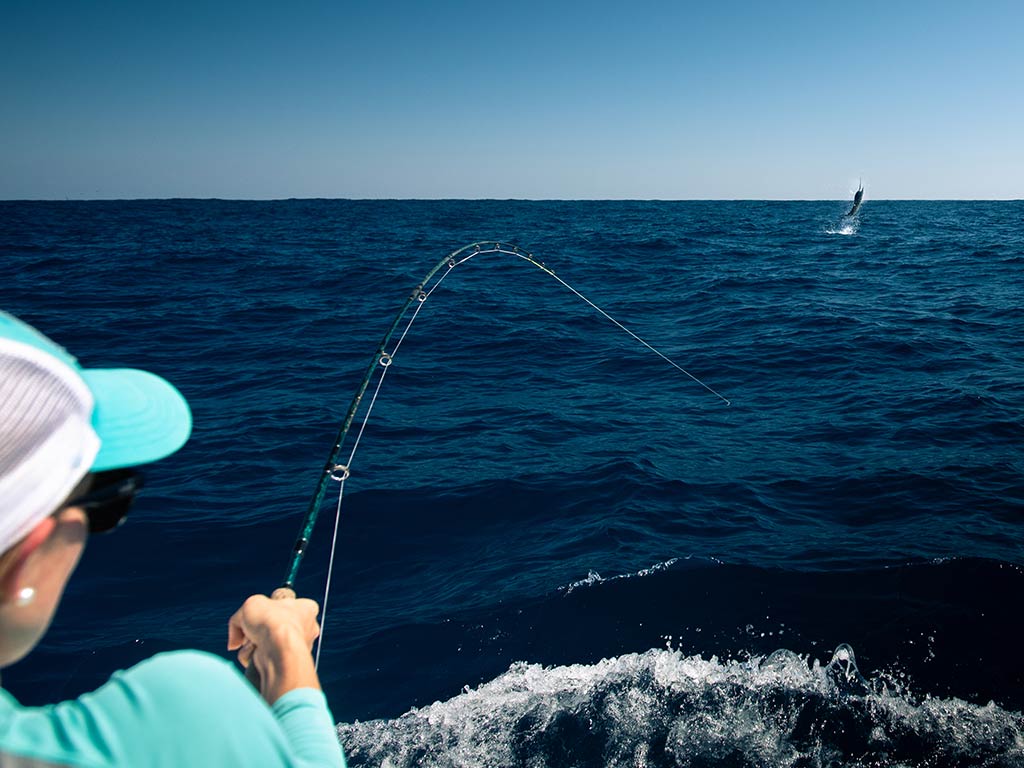
Speaking of once-in-a-lifetime activities, offshore fly fishing is something that experienced anglers must try, too. Topwater feeders like Tuna, Mahi Mahi, and Billfish are all possible but it will take all your skill and strength to get one to the boat. If you fancy something a bit more straightforward, we suggest hitting the shore, where Eels and Jacks are possible on the fly. It’s all about finding a good spot beneath the cliffs.
Azores Reef Fishing
We’ve mentioned that the reefs are teeming with fish, so it makes sense to dedicate a section in its entirety to casting a line here. These underwater metropolises are great for fishing, snorkeling, and simply enjoying yourself from the boat. Expect dazzling colors above and beneath the water, with plenty of action, whenever you visit.
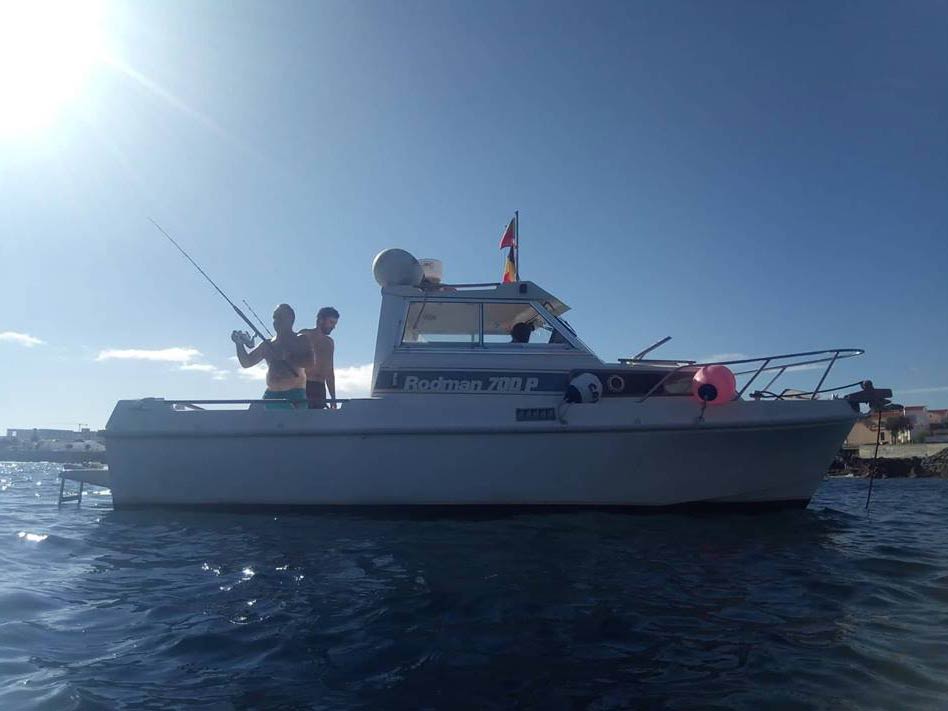
The most popular method to land the Triggerfish, Parrotfish, Groupers, and Bream that live here is bottom fishing. It’s exactly as it sounds. You’ll usually drift across the water, having lowered your bait to the sea bed, dragging it around either manually or with the boat. Live bait or cut bait is most effective here, as your target species simply can’t get enough of anything that crawls along the bottom.
Deep Sea Fishing in the Azores
Big game fishing is the be-all-and-end-all of fishing in the Azores. And the way to go about it is by deep sea fishing, of course. The good news about heading offshore in this archipelago is that it won’t take you long at all to reach the sweet spots. On a trip as short as 4 hours, you’ll be able to land some of the monsters we’ve mentioned above. But how do you go about it?
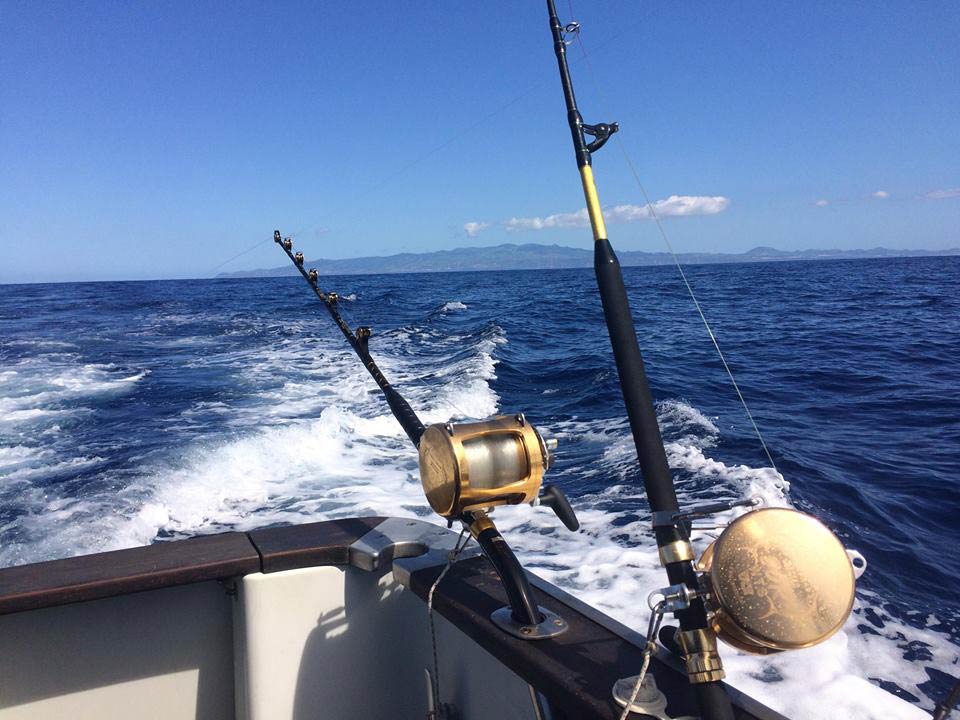
For topwater feeders like Marlin, Tuna, and Mahi Mahi, trolling is the preferred option. Much like bottom fishing, you’ll be mimicking the action of these predators’ prey, just this time on the water tops. Your boat will drag multiple lines behind it, using artificial lures, trying to entice these hungry fellas. Sit back and enjoy the ride and sensational views, but get ready to leap into action when you hear the reels screech.
Looking for a more hands-on approach? You can also try jigging. This is the preferred technique for Billfish that feed further down. Here, you’ll need a long line to reach depths of around 1,000 feet, as you yank your line up and down the water column to mimic dead or injured fish that these creatures will think are easy prey.
Azores Spearfishing
Where there are reefs, there’s endless spearfishing potential. And out in the heart of the Atlantic, there’s little need to worry about overfishing (accordingly, regulations) concerning spearing in the Azores. Grabbing a pole or speargun and getting up close and personal with your target fish is one of the most exhilarating experiences you can get. And it doesn’t get much better than the Azores.
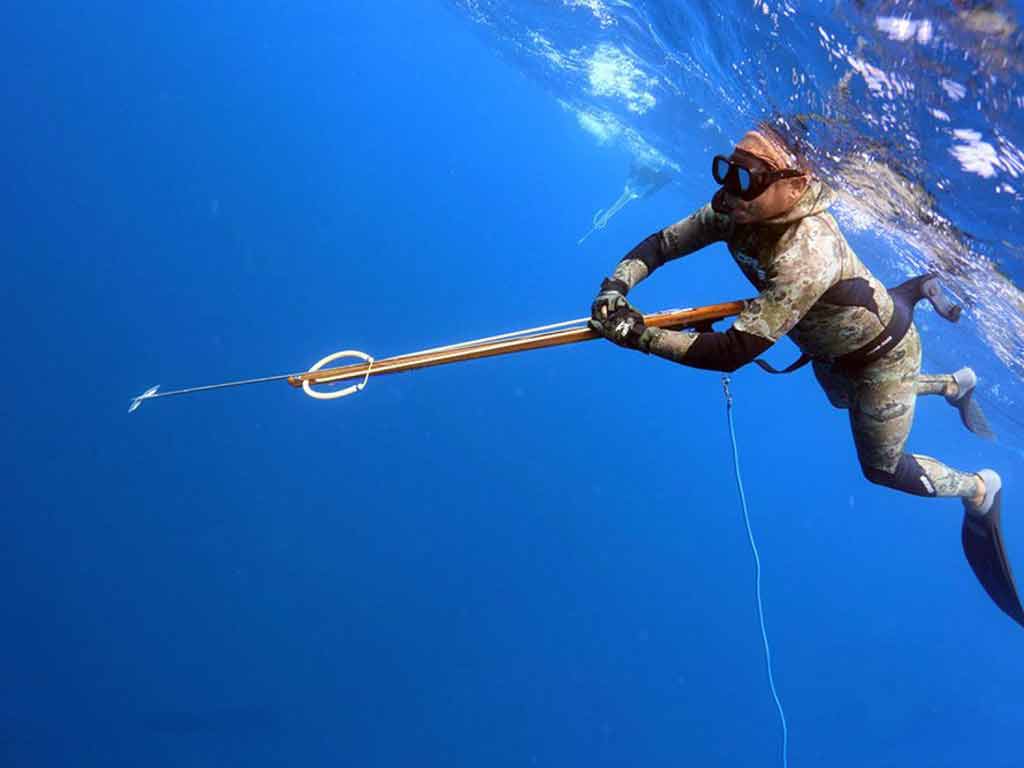
We mentioned the azure reefs, and they’re just a starting point for what’s on offer if you want to try spearfishing here. The real action takes place near the banks, where you can come face-to-gills with Tuna, Mahi Mahi, and much more. We suggest starting off in the shallows and working your way up to the open ocean. But whatever you choose, you won’t forget it in a hurry!
When to Go Fishing in the Azores
So you know about the what and the how, now it’s time to dig into the when. While fishing is possible year-round thanks to the mild winters – and reef fishing is on fire throughout the year – you’ll want to time your visit if you’ve got a particular species in mind.
Big game fishing season kicks off in April with the arrival of Tuna. With four species showing up, it’s the perfect warm-up for when Billfish season starts. There’s a short period around June when Tuna and Marlin overlap, which is the best time to visit. But the Marlin fishing just gets better and better – lasting all the way through October.
Azores Fishing Rules and Regulations
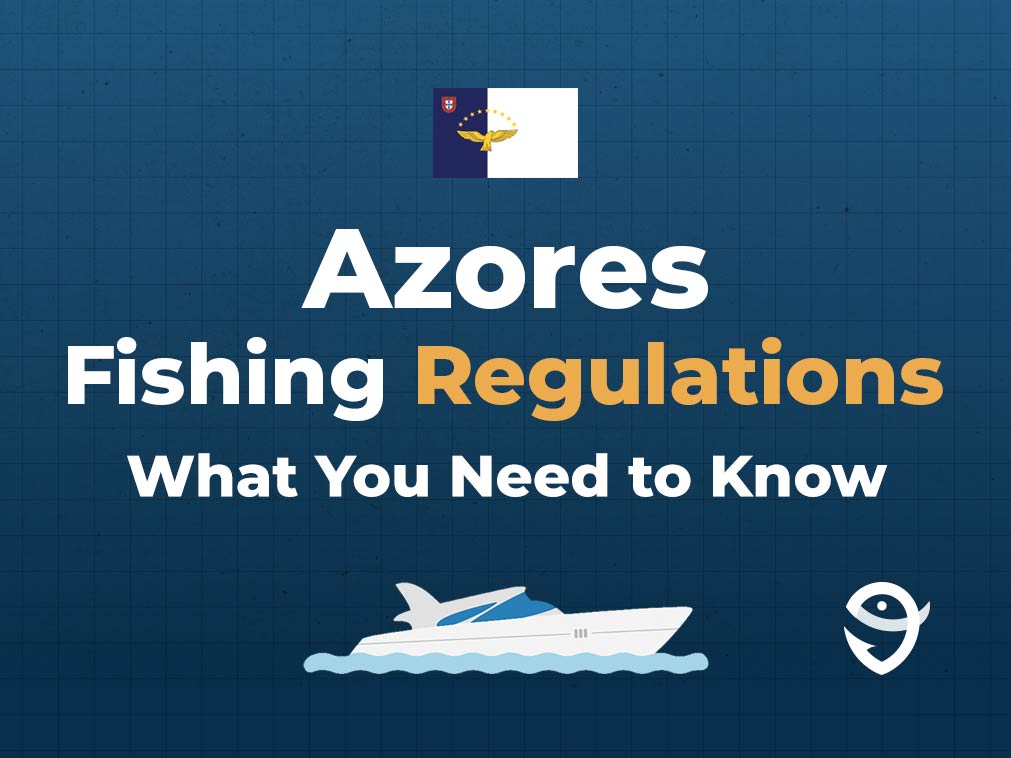
Before going fishing in the Azores, you’ll want to know about all the regulations. The good news is that, when fishing with a registered Azores fishing charter, you won’t need a license at all.
However, if you plan on fishing from shore or in freshwater, you’ll need to get a recreational fishing license. Bear in mind that these are not always easy to obtain – not least of all due to the language barrier if you don’t speak Portuguese. We suggest you contact someone in the Azores to give you a helping hand. That way, you can fly over without worrying about whether everything will be okay. For more information, and to find out the list of license vendors, check out the RIAC website.
If you intend on going spearfishing, you’ll need another specific license, too. You can find more information about Azores freediving “hunting” permits here.
Frequently Asked Questions
While we’ve tried to cover everything above, there are a few FAQs we didn’t quite have time to explore in detail. Have a look at our answers to what you want to know.
Can children go fishing in the Azores?
- Absolutely! Casting from shore and nearshore charters are both suitable options for fishing with children. We wouldn’t suggest bringing the little ones on an offshore adventure, though.
How long does a fishing trip take in the Azores?
- This depends on what you want. Most trips last between 4–8 hours . The beauty of fishing here is that even the deep waters are just a few miles from shore. However, if you want a shot at getting a mixed bag, you should spend as long as possible on the water.
What’s the weather like in the Azores?
- That also depends on when you come. The islands have a subtropical climate, meaning it will rarely drop below 60ºF (15ºC) during the day, even in the depths of winter. But it doesn’t really reach get hotter than the mid-80s (high 20s) in summer. You should also know that it can get stormy at the end of September and beginning of October.
Where should I go fishing in the Azores?
- Basically, anywhere! The nine inhabited islands of the Azores are great starting places for casting a line. The capital, Ponta Delgada is the main hub for charters, while shore fishing spots are at a premium because of the incredible cliffs. Meanwhile, Sao Miguel is the most popular island for freshwater fishing.
Azores Fishing: A World-Class in Paradise
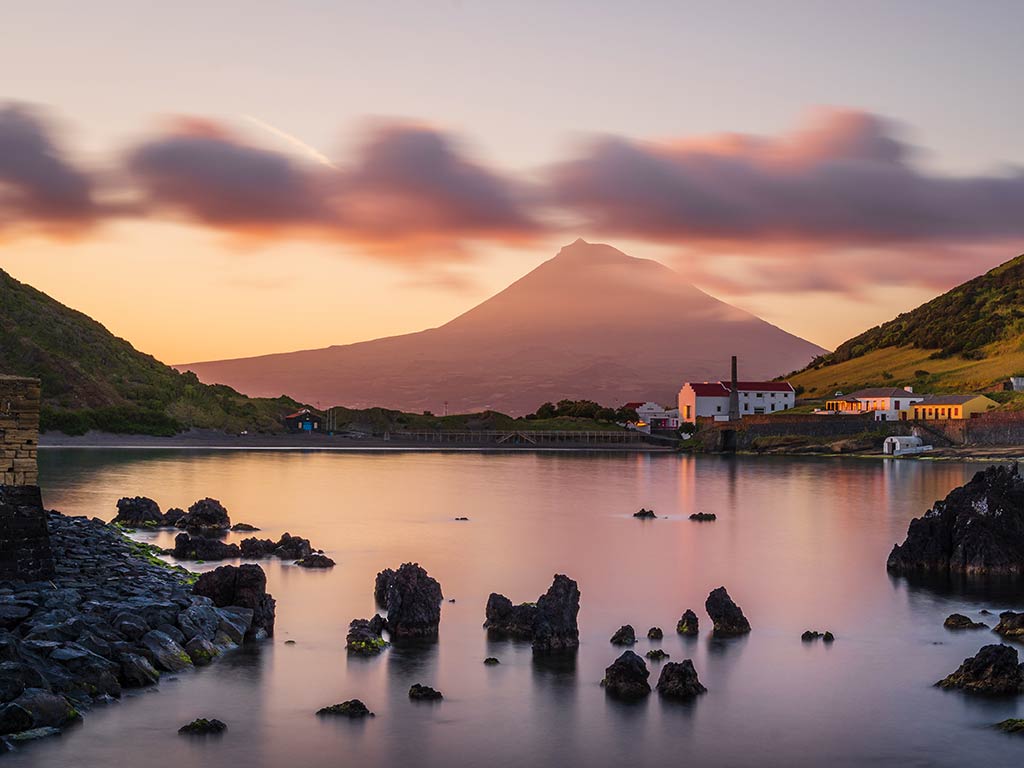
So there you have it. By now, you know why fishing in the Azores is something you must do at least once in your life. Many of the most sought-after fish across the world call these waters home – and so should you, for a few days at least. Escape from it all in the heart of the Atlantic, and enjoy stunning scenery, lush nature, and even better fishing. What are you waiting for?
Have you ever been fishing in the Azores? Think we missed something? Let us know in the comments below!
The post Fishing in the Azores: The Complete Guide appeared first on FishingBooker Blog.
https://ift.tt/bhwKLz9
0 Comments
Enregistrer un commentaire